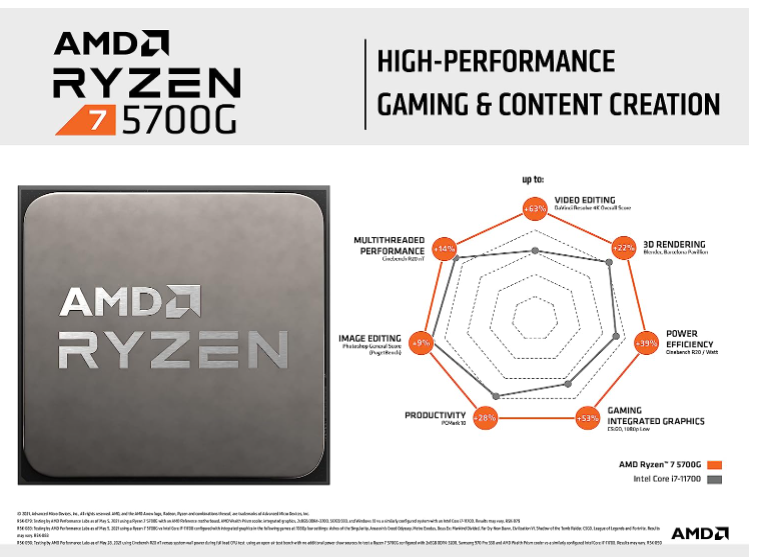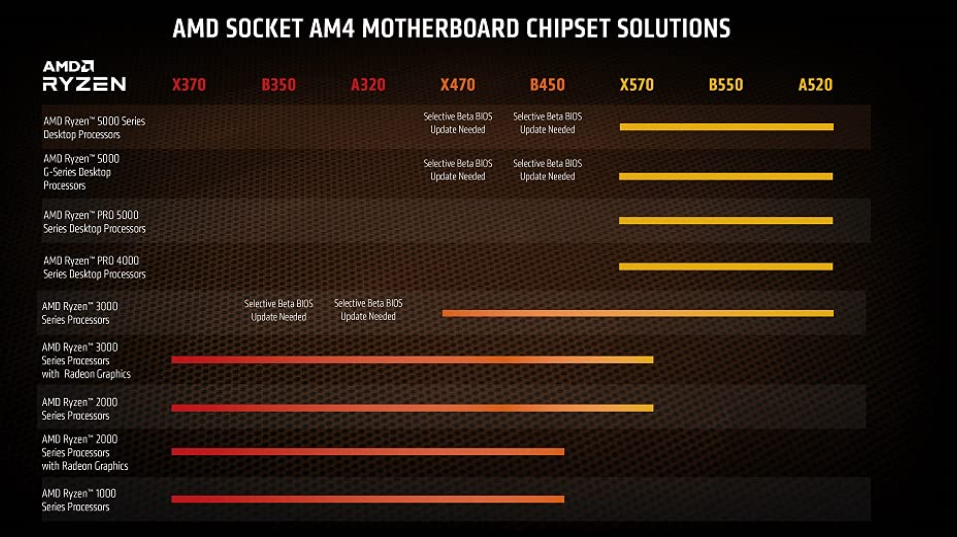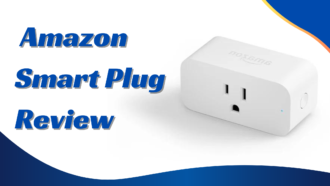AMD Ryzen 7 5700G Review
- 1 AMD Ryzen 7 Specs
- 1.1 Performance
- 1.2 Calculated Times
- 1.3 Branding and Production Method
- 1.4 Memory
- 1.5 Power Intake
- 1.6 Launch Date
- 1.7 Price
- 2 The Bottom Line
Integrated with AMD Ryzen 5 4000 series and AMD Ryzen 3 5000 series processors is the AMD Radeon RX Vega 6 Graphics. The 6 CU Vega-based iGPU with a boost clock of 1.5 GHz to 1.8 GHz will be released in the first month of 2020. Since last year, Vega 6 visuals have seen tremendous improvements, making them suitable for practically any common task and allowing for playable frame rates in games at medium settings.
AMD Ryzen 7 Specs
| Architecture | Vega |
| Code Name | Vega Raven Ridge |
| Type | Laptop |
| Release Date | 7 January 2018 |
| Boost Clock | 1100 MHz |
| Manufacturing Process | 14 nm |
| Transistors | 9,800,000,000 |
| GPU Base Clock | 400 MHz |
| Cores | 15 W |
| Power | 15 Watt |
For extreme computer and gaming performance, go no further than AMD’s Radeon RX Vega 6. It’s little wonder that with a rating of 520, it’s favored by both amateurs and experts. This review will focus on the card’s functionality and features.
Performance
Vega 6 Graphics performance is sensitive to settings like TDP (12-25 Watts), clock speed, cooling solution, and amount of RAM. Dual-channel RAM with a high bandwidth is a huge help to the integrated GPU. Renoir APUs benefit from LPDDR4x memory support because of this.
The new vega GPUs are based on the same architecture as the previous generation, but the shift to 7nm has allowed for a significant increase in power.
Compared to the previous-generation Vega 8 (2000/3000 series), the new AMD Radeon RX Vega 6 (Ryzen 4000/5000 series) graphics are nearly 20 percent faster. The Vega 6’s performance is comparable to that of the Nvidia Mx150 and Mx330, and it even exceeds that of the Nvidia Mx230.
Calculated Times
The Core Clock of the AMD Radeon RX Vega 6 is while the Boost Clock is 1100 MHz MHz. As a result, it can easily deal with even the most taxing programs.
Branding and Production Method
The latest 14 nm technology was used in the production of AMD’s Radeon RX Vega 6, guaranteeing peak efficiency and performance. This state-of-the-art technology keeps the card running smoothly and cool under heavy loads.
Memory
The AMD Radeon RX Vega 6 features a memory clock speed of MHz and a memory size of. The card’s GB/s of memory bandwidth makes it perfect for games and other graphics-intensive software.
Power Intake
The AMD Radeon RX Vega 6 uses just watts of power, making it a good option for eco-conscious consumers. Data Storage Capacity and Bus Size The memory bus width of the AMD Radeon RX Vega 6 is bits, and it is compatible with memory of type memory_type. As a result, it’s a great option for games and other programs that rely heavily on visuals.
Launch Date
Since its introduction on January 7, 2018, the AMD Radeon RX Vega 6 has quickly gained favor among both gamers and professionals. When it comes to high-performance graphics cards that can run even the most demanding programs, the AMD Radeon RX Vega 6 is a great option. Its enormous memory capacity, fast clock speeds, and low power consumption set it apart from the competition.
Price
In the meanwhile, AMD released its Ryzen 5000 processors, but the company’s shift to premium pricing revealed two gaps in its product stack: a high $300 entry price to the Zen 3 family, and a large $150 difference between its Ryzen 5 and Ryzen 7 families. Unfortunately for AMD, Intel’s Rocket Lake swooped in and filled those pricing gaps a few months ago, catching AMD completely off guard.
The Bottom Line
The Zen 3 execution cores in the Cezanne APUs work in tandem with the Radeon Vega graphics engine to tackle several issues simultaneously. Since AMD already offers an OEM-only Ryzen 7 5800, it doesn’t make much sense for the 5700G to fill the same role. We’ll get into that in greater detail shortly. AMD has also integrated the CCX (Core Complex)’s eight cores and 16 MB of cache into a single, seamless whole. For comparison, Zen 2 included two clusters of four cores, each with its own 4MB of cache.
Core-to-cache and core-to-core latency are both reduced thanks to this larger unified cache compared to the Renoir processors. In addition, the cache size is increased by a factor of two for heavily threaded applications, and by a factor of four for lightly threaded workloads, which now have access to all 16MB of cache.
Keeping the PCIe 3.0 interface present on all current-generation AMD APUs is another consequence of reusing the Renoir SoC design. Therefore, the chip only offers 20 lanes of PCIe 3.0 connectivity (16 for graphics, 4 for the chipset, and 4 for storage), but the Ryzen 5000 variants for desktop PCs have 24 lanes of PCIe 4.0 connectivity.



















